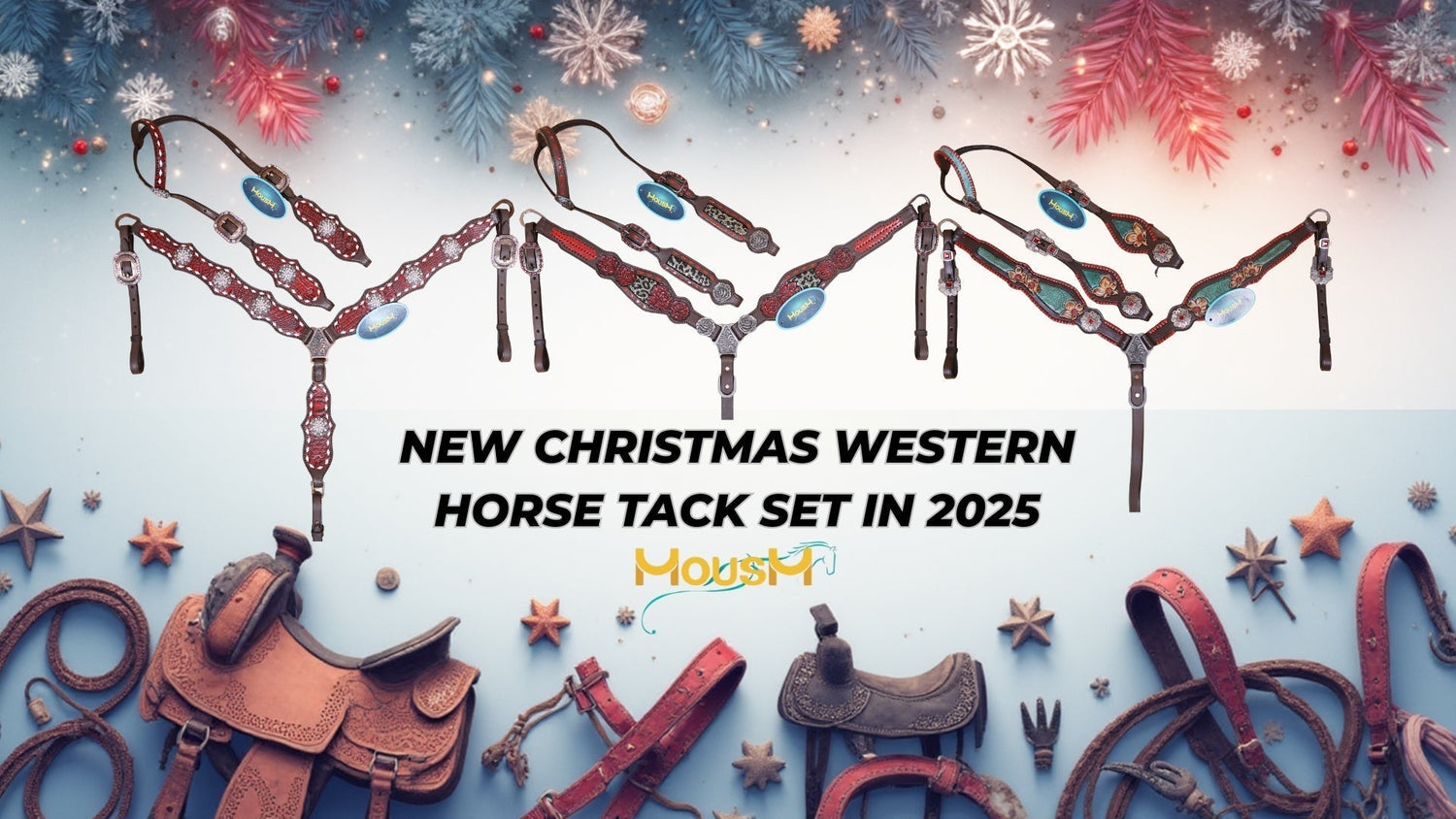A contoured saddle pad is shaped to follow the natural curve of a horse’s back, especially over the withers and topline. Unlike flat pads, which lie straight across the back, contoured pads rise up at the front and sometimes the rear to better match a horse’s anatomy.
Saddle pad shape plays a bigger role in horse comfort than many riders realize. A pad that doesn't fit correctly can cause pressure points, restrict movement, or interfere with proper saddle placement—even if the saddle itself fits well.
This article will help you decide whether a contoured pad is the right choice for your horse, based on their back shape, your tack setup, and the type of riding you do.
Why Do You Need a Contoured Saddle Pad?
A contoured saddle pad is shaped to follow the natural curve of a horse’s back, especially over the withers and along the topline. This design allows the pad to sit more naturally on the horse, reducing the chance of bunching, pinching, or uneven pressure.
In contrast, flat saddle pads are straight across and often require manual adjustment to keep them from pressing down on the withers or creating pressure points. While flat pads may work fine for horses with broad, level backs, they can cause problems on horses with more defined withers or a curved topline.
Contoured pads come in a variety of materials like felt, wool, neoprene, or foam, and are often available with added features such as spine channels, gel inserts, or moisture-wicking liners. They can be square, round, or cut-back, depending on the discipline and rider preference.
Explore Our Contoured Saddle Pad Collection
Benefits of Western Saddle Pad
A well-designed contoured pad offers several key advantages for both horse and rider:
-
Improved Fit: The shaped design helps the pad conform more closely to the horse’s back, reducing the risk of bridging (where the pad doesn't make full contact) and eliminating uneven pressure along the spine or loin.
-
Wither Clearance: Horses with high or sharp withers benefit most from contoured pads. The raised front keeps the pad from sitting directly on the withers, preventing pinching, rubbing, or restricted movement through the shoulders.
-
Better Contact: Because the pad lies more naturally along the horse’s back, the saddle sits more evenly. This supports clearer rider cues and helps distribute weight more effectively, improving comfort and performance.
-
Stability: Contoured pads are less likely to shift, bunch, or roll during riding, especially on horses with curved backs or those working on varied terrain. A stable pad helps keep the saddle secure and reduces the risk of soreness caused by slippage.
When a Contoured Pad Might Not Be Necessary
While contoured pads have their advantages, they’re not always essential. In some cases, a flat pad will work just fine:
-
Round-backed, low-withered horses: Breeds like Arabians, Haflingers, or some Quarter Horses often have broad, level backs. On these horses, a flat pad may naturally conform well without bridging or pressure.
-
Short-backed or stocky breeds: These horses may not need the added shape of a contoured pad, especially if the saddle and pad already offer good coverage and balance.
-
If using a fully custom-fitted saddle: A well-fitted saddle that’s been shaped specifically for your horse’s back may not require a contoured pad, since the saddle already follows the horse’s natural outline.
-
For very light riding or short sessions: If you’re doing casual riding or groundwork with minimal time in the saddle, a contoured pad may not be necessary, provided the rest of your tack fits well.
Common Fit Mistakes with Contoured Pads
Even with the right shape, a contoured pad can cause problems if it’s used incorrectly. Here are some common mistakes to avoid:
-
Assuming one shape fits all horses: Contoured pads come in a variety of curves, rises, and spine shapes. Just because a pad is labeled “contoured” doesn’t mean it suits your horse’s specific back. Always check for full contact and spine clearance before riding.
-
Using a contoured pad under an ill-fitting saddle: A saddle that doesn’t fit properly can’t be “fixed” by a pad, contoured or otherwise. A poorly balanced or pinching saddle will still cause discomfort, no matter what’s underneath it.
-
Not pulling the pad up into the gullet: If the center of the pad is left flat across the withers, it can collapse under the saddle and put pressure on the spine. Always lift the front of the pad into the gullet of the saddle before tightening the cinch to preserve wither clearance and airflow.
Choosing the Right Contoured Pad
If you’ve decided a contoured pad is the right choice, take the time to find one that fits your horse and your riding style:
-
Material: Wool and felt pads offer excellent cushioning and moisture control. Gel or foam inserts can add shock absorption, but may be heavier. Neoprene is easy to clean and non-slip, but can trap heat.
-
Thickness and Length: Thicker pads may help with minor saddle fit issues, but can also affect how the saddle sits. Make sure the length of the pad matches your saddle skirt—too short and it won’t protect; too long and it may interfere with movement.
-
Ventilation or Moisture-Wicking Features: Pads with spine channels, perforations, or moisture-wicking linings help reduce heat and sweat buildup, which is especially important in hot climates or during intense rides.
-
Budget and Durability: Quality materials and construction pay off in the long run. A well-made contoured pad should hold its shape, resist compression, and last through regular use without breaking down or causing sores.
Whether you need a contoured saddle pad depends largely on your horse's back shape and the type of riding you do. Contoured pads are designed to follow the natural curve of the horse’s spine, providing better wither clearance, improved pressure distribution, and a more secure saddle fit.
If your horse has prominent withers, a dipped back, or you're dealing with saddle fit challenges, a contoured pad can make a significant difference in comfort and performance. On the other hand, horses with flat or well-muscled backs may not require the added shaping. Ultimately, choosing the right pad means considering both your horse’s conformation and your tack setup to ensure a balanced, comfortable ride for both horse and rider.
Why MOUSM?
At MOUSM, you’ll discover a wide range of equestrian products like: Headstall and Breast Collar Sets, Saddles, Wither Straps, Bronc Halters, Saddle Pads, Reins, Bosals, Tie-Downs, Home Décor, Fashion Accessories, All Types Of Bags (From Handbags To Backpacks), and Dining Products. Handcrafted from genuine Argentina cowhide leather, meticulously handcrafted by our skilled artisans. Each design is a testament to exceptional craftsmanship, featuring intricate hand-tooling, stunning acid wash effects, and eye-catching stonework.
Equipped with premium-quality studs, sparkling stones, and elegant conchos, these products are built with antique copper, nickel, and brass hardware to offer both durability and long-lasting performance. Their sturdy construction ensures they can handle the rigors of Western riding while maintaining their stylish appeal.
Perfect for Western riding, rodeo events, equestrian shows, and everyday wear, MOUSM pieces not only complement your gear with confidence but also add a distinctive and fashionable flair to your collection. Whether you’re in the arena or on the trail, these accessories combine functionality with stunning design, reflecting your passion for riding and your appreciation for quality craftsmanship.













